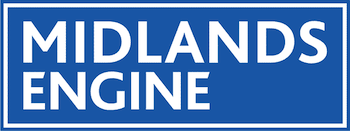Vortex IoT, National Express, BT/EE
Our cities are experiencing rapid urbanisation and population growth, adding pressure to the existing transport infrastructure through increasing demand. However, there is an opportunity for a more sustainable urban development within the smart city paradigm.
Smart cities have the potential to provide rapid urban planning and dynamic decision making through the enhanced use of data.
The same data can also be used for road and infrastructure management; whether this is instantly identifying potholes, obstacles on the roads or damage to a lamppost or a traffic sign, by identifying this data it can be reported to the correct authorities immediately. This can also apply to obstructions within the road network, that will support the efficient management of these situations, in turn, reducing disruption and increasing the availability of urban road assets across the transport networks.
The challenge is that smart cities require significant amounts of continuous, real time data to enable effective mapping, tracking, monitoring and processing and this is where CURBS can contribute both data and information.
The Continuous Urban Scanner (CURBS) aims to retrofit specialist LiDAR cameras to vehicles in order to more effectively manage the city’s roads and infrastructure by utilising data to create a real-time 3D mapping and dynamic monitoring system.
Buses or other vehicles that travel the same route every day become mobile scanners, providing data in real time and enabling overlaying, processing and updating of streamed information. This will drastically increase the efficiency of city maintenance.
The data gathering will include the road surfaces, kerbsides and objects, reporting on the condition of road markings and cleanliness, monitor tree work, lamp posts, on-street parking bays and bus stops, as well as instances of fly tipping, all of which will help to save time and money.
The project will also contribute to road safety by reporting near misses and accidents. This, in addition to road safety assessment on pedestrian crossing, will start to provide a safer future within our cities.
CURBS works on the intersection of three transformative technologies: LiDAR, 5G and Artificial Intelligence. The 3D LiDAR devices are used as mobile laser scanners which collect gigabytes of point-cloud data per mile, which in itself creates issues with bandwidth, latency, storage and processing. 5G will provide low latency and large bandwidth, which is a pre-requisite for a new generation for both fixed and mobile sensors in smart cities.
This project wouldn’t be possible with 4G, but 5Gs low latency and high upload capacity allows for this transfer and alignment for this point cloud data. The project will carry out 3D city modelling using retro-fit cost-effective mobile 5G-enabled LiDAR devices to enable continuous updates.
The project has an 18-month timescale, including a three-month pilot phase and live demonstrator in the West Midlands, within the future mobility testbed. The pilot stage will utilise a fleet of eight buses from Bordesley Bus terminal, allocated by National Express and use the Bordesley Bus Garage for installations, maintenance and testing. The provisionally assigned routes will include the 8A, 8C and 17 in Birmingham.



